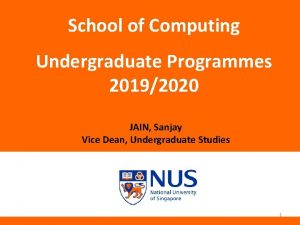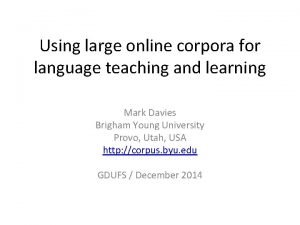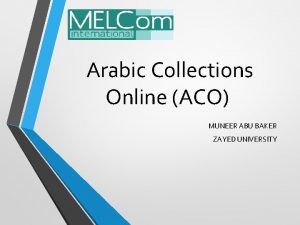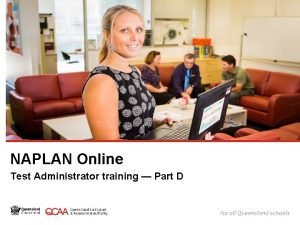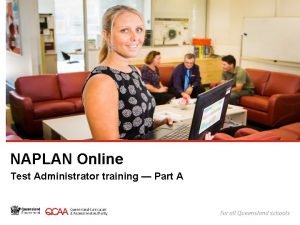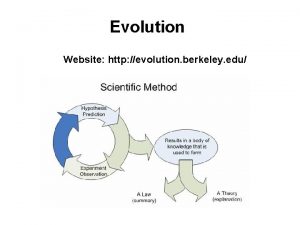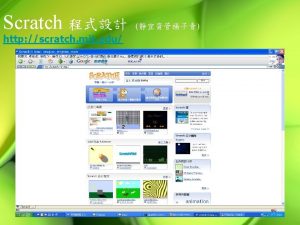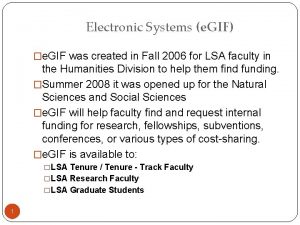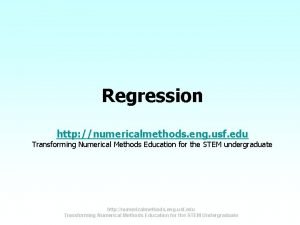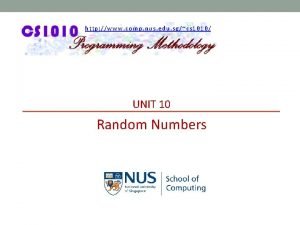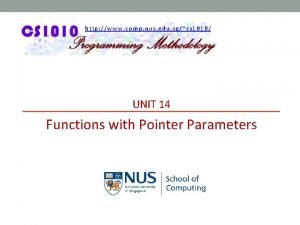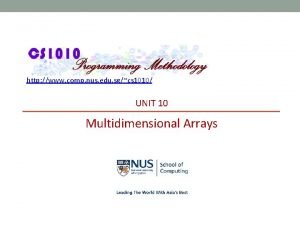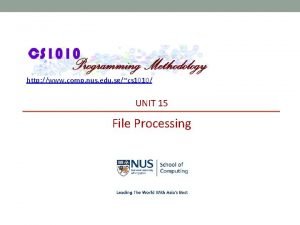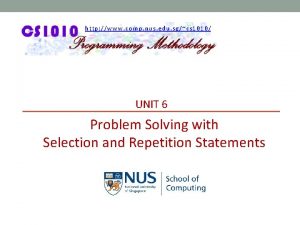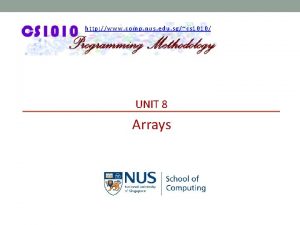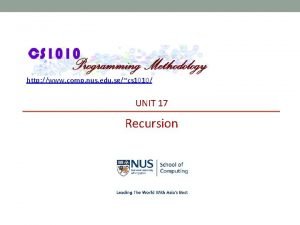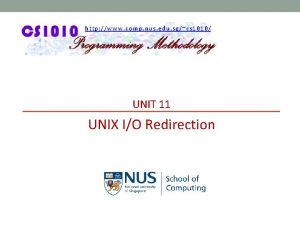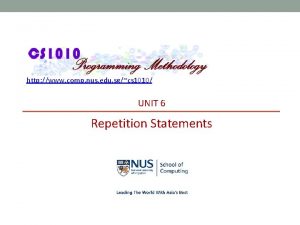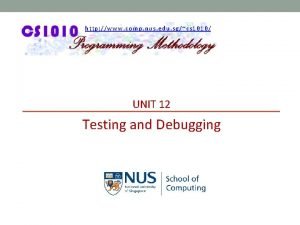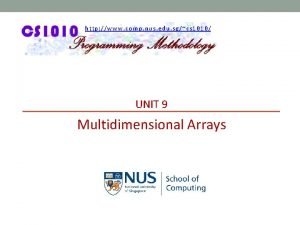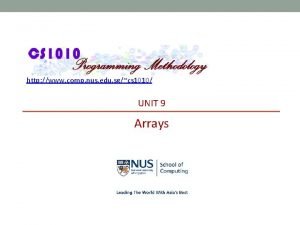http www comp nus edu sgcs 1010 Computational













- Slides: 13

http: //www. comp. nus. edu. sg/~cs 1010/ Computational Thinking Problem Formulation

Aaron Tan, NUS Problem Formulation 2 Quick recap… The Hungry Bear Bargain buy Leaking flowmeter Tourist problem Verifying your problem definition § § § Is a solution possible? Is a solution desirable? Is there a trivial undesirable solution? Do the constraints conflict? Anything missing? Anything extraneous? Tourist Places of Interest Aaron SZG, BG, JB Betty CG, JG, BG Cathy VC, SI, OR David JG, CG, OR Evans CG, JG, SZG Frances BG, SZG, JB Gary CG, OR Harry JG, CG

Aaron Tan, NUS Problem Formulation 3 Lessons learned § Computational problem has inputs, outputs, constraints; identify them. § Use concrete problem instances to help you understand the problem. § Problem statements can be vague, make them clear. § Constraints may be implicit, make them explicit. § Without constraint, may get trivial undesirable solution. § With sufficient constraints, can get desirable solution. § When constraints conflict, no solution. § Verify whether problem definition is good enough; revise if needed. § Use Polya’s questions to guide your reasoning.

Aaron Tan, NUS Problem Formulation 4 Tourist Problem Given a list of tourists, each with a list of places to visit, schedule bus trips so that each tourist gets to visit all the places in his/her list. Real-life problems are much more complex! Tourist Places of Interest Aaron SZG, BG, JB Betty CG, JG, BG Cathy VC, SI, OR David JG, CG, OR Evans CG, JG, SZG Frances BG, SZG, JB Gary CG, OR Harry JG, CG

Aaron Tan, NUS Problem Formulation Traffic Congestion 5

Aaron Tan, NUS Problem Formulation 6 Traffic Congestion Initial problem statements: § § § Traffic congestion contributes to inefficiency in commuters. Traffic conditions are not available at real time. Drivers are unaware of less congested alternative routes. These are real-world situations. But these concepts are not computational: “traffic congestion”, “traffic conditions”, “less congested routes”. To disambiguate, we call them real-world issues.

Aaron Tan, NUS Problem Formulation 7 Identify Computational Factors Need to turn non-computational concepts into computational factors Idea #1 (I want to go home quickly) § Measure average speed of cars on road. § Faster speed means less congestion. § Slower speed means more congestion. § Difficulties § Different roads have different speed limits: (normal roads 50 km/h, expressways 90 km/h) § Average speed of 40 km/h on normal roads is not slow. § Average speed of 60 km/h on expressways is not fast. § No car at all: 0 km/h, but completely no congestion.

Aaron Tan, NUS Problem Formulation 8 Identify Computational Factors Need to turn non-computational concepts into computational factors Idea #2 (Crowdedness) § Measure average distance between cars on road. § Large distance means less congestion. § Small distance means more congestion. § Difficulties § Different roads have different speed limits: (normal roads 50 km/h, expressways 90 km/h) § For safe travel, average distance on expressways is larger than that on normal roads.

Aaron Tan, NUS Problem Formulation 9 Identify Computational Factors Need to turn non-computational concepts into computational factors Possible Idea #1 (Relative Speed) § Measure average relative speed (average speed/speed limit) § Smaller than 1 means more congestion. § Close to 1 means less congestion. § Works for both normal roads and expressways.

Aaron Tan, NUS Problem Formulation 10 Identify Computational Factors Need to turn non-computational concepts into computational factors Possible Idea #2 (Relative Distance) § Calculate minimum safe distance on road. § 3 -second rule (dry weather): takes 3 seconds to respond and brake. § Measure average relative distance (average distance/minimum safe distance) § Larger than 1 means less congestion. § Close to 1 means more congestion. § Works for both normal roads and expressways.

Aaron Tan, NUS Problem Formulation Up-slopes You are an avid runner. Given a running route consisting of heights of points at regular interval on the route, you want to find the number of up-slopes in the route. An up-slope is a contiguous group of heights of increasing values. Enter data: 3 3 4 : 2. 9 3. 65 -1 Number of up-slopes = 4 11

Aaron Tan, NUS Problem Formulation 12 Up-slopes 3 3 4 4. 3 3. 3 2 1. 8 2. 7 3. 2 3. 9 4 3. 4 2 2. 9 3. 65 -1 3 0 1 0. 3 -1 -1. 3 -0. 2 0. 9 0 0. 5 0. 7 0. 1 -0. 6 -1. 4 0. 5 0. 75 -1 0 1 1 -1 -1 -1 1 0 1 1 1 -1 -1 1 1 -9 To find: Number of up-slopes? Longest up-slope? Steepest up-slope?

Aaron Tan, NUS Problem Formulation End of File 13
